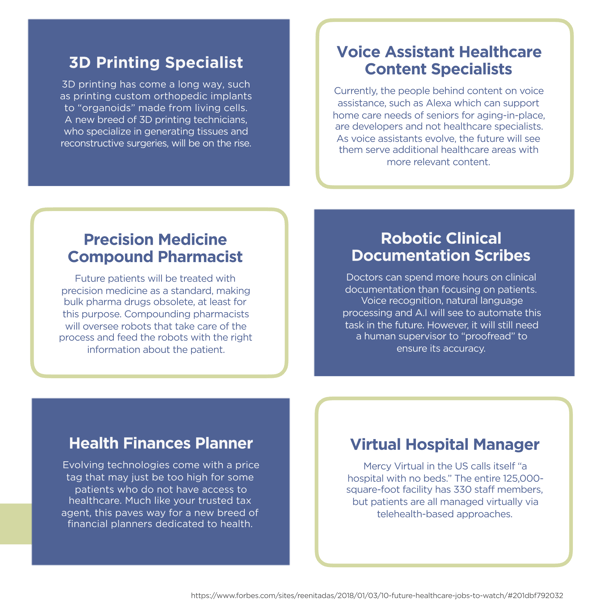Technological breakthroughs that you might have deemed "science fiction" just a few years ago are today science fact in the healthcare industry.
Healthcare systems are being smashed by the exponential influx of COVID-19 patients and those that are anxiously wanting to test themselves. While China is starting to return to work, Western nations like Italy and Spain are crumbling under the onslaught of the virus' carnage. Healthcare systems and healthcare workers are responding in the best possible ways they can - workers are working double shifts, patients are being treated in hospital parking lots, and doctors are making life and death decisions in real-time based on the limited tech and treatment resources they have at their disposal. Sometimes the equipment is dated, or not available in the numbers needed. We are innovating on the spot and all trying to do more with less and #flatteningthecurve. Occasionally, when we are in the midst of a perfect storm, it is challenging to raise our gaze and look further afield to far horizon futures post-COVID-19. The below is an attempt at looking at green shoot innovations (including from China) which can actively help in the battle against the Coronavirus outbreak, and which will help amplify the humanity and human abilities of healthcare workers now - and beyond tomorrow...
New technology has been leaving fingerprints in the healthcare industry for years now, and have had some big breakthroughs within data collection, treatments, research, and medical devices, from hearing aids to pacemakers. These technologies are augmenting medical providers and helping them find innovative ways of practising medicine into the future - a future where patients are increasingly taking medical matters into their own hands, and waiting impatiently on the sci-fi promised land of improved quality of life - and even eternal life!
Medicine and MedTech never stops changing. The healthcare system is always evolving in tandem with new technology. The healthcare industry has been transitioning from caterpillar to butterfly at a startling pace in recent years and holds more near horizon promise than ever before. The old tools (above) are being exchanged. We are now at a place in history where we have to reconsider everything we thought we knew about healthcare - and its tools of the future.
As the tools shift, so does the nature of healthcare jobs. Unsurprisingly, some healthcare jobs may cease to exist in the future. We are entering an exciting phase of creating new jobs and the concomitant training to shape the next generation of our healthcare workforce. Here are just a few things (from my keynote at Health South Australia / HISA) to look out for as we create the healthcare (tools) and workforce of the future:

At the tail end of 2019, I was also invited to the NSW Health Leadership Conference as their futurist keynote speaker. There, I had the opportunity to take these health leaders on a future odyssey into the Tomorrowland of Healthcare and provide them with foresight about the crucial elements in the digitisation of the medical industry.
One take away was that our smart phones play a big part of the digitisation of healthcare as they have now become medical devices. Brands (like Apple) are driving this new convergence and are officially entering the healthcare space with their app “Health” and Apple Watch which collects users’ personal health data. The app landscape can also alert you about excessive noise exposure and if an unusually high or low heart rate is detected. With the help of thousands of third-party apps, you have everything from nutrition to meditation to fitness in one place. This is predictive maintenance - but for humans! Doctors are now starting to prescribe apps to patients to nudge us into adherence and more responsible behaviours.
By utilising these apps, you can create data sets which visualise your blood sugar levels, heart rate, activity and general wellbeing. This creates possibilities for data prediction - and in turn predictive maintenance - which can inform you of the likelihood of a heart attack, and how to prevent one. All of this can help create a “Wellness Score Report”, painting a picture of your overall health and medical history (and maybe even more importantly your medical future).
Further, research done at the university of Heidelberg has shown that AI is getting better than dermatologists at diagnosing skin cancer illustrated by a test that compared AI’s performance with 58 international dermatologists and found that the CNN (AI) missed fewer melanomas and misdiagnosed benign moles less often than the group of dermatologists.
Other technologies include Proteus Digital Health - a Digital Medicine offering that measures the effectiveness of medication treatment and helps physicians improve clinical outcomes, Bigfoot Biomedical - which provides optimised insulin delivery solutions accessible for all, and Google - which has filed a patent on an implantable electronic eye device - a technology that is a potential move towards bionics, that is hoped to one day correct, or even replace, eyesight. These directional trends are converging biology and technology and this convergence is turning us all into biotech cyborgs.
*The original blog article was published on February 21st, but has been updated to reflect the exponential nature of the healthcare crisis we are currently facing.
Take part in anders's corona strategy webinar
During a time of pandemics and panic, it is a time for us to pause and come together. We will outline a strategic thinking method for innovation and risk mitigation - for both this viral disruption and the beyond-tomorrow trends.